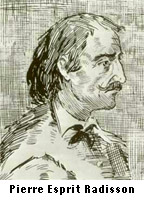
Worksheets and No Prep Teaching Resources
Reading Comprehension Worksheets
Canadian Theme Unit

Canadian Theme Unit
 Worksheets and No Prep Teaching Resources Reading Comprehension Worksheets Canadian Theme Unit |
 Canadian Theme Unit |
| edHelper's suggested reading level: | grades 6 to 7 | |
| Flesch-Kincaid grade level: | 6.3 |
|
Groseilliers and Radisson
By Mary Lynn Bushong |

|
 1 Pierre Esprit Radisson was born in France around 1640, but he had no desire to stay there. He craved excitement and adventure. However, he may have gotten more than he bargained for when he came to the New World.
1 Pierre Esprit Radisson was born in France around 1640, but he had no desire to stay there. He craved excitement and adventure. However, he may have gotten more than he bargained for when he came to the New World. |
Create Weekly Reading Books
Prepare for an entire week at once! |
| Leave your feedback on Groseilliers and Radisson (use this link if you found an error in the story) |
 |
Canadian Theme Unit
|
 |
Social Studies
|